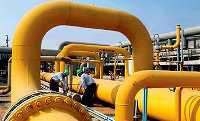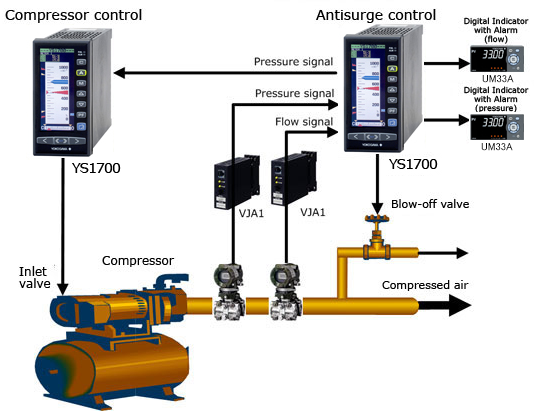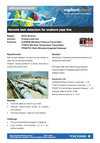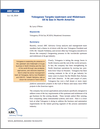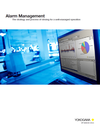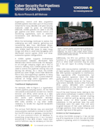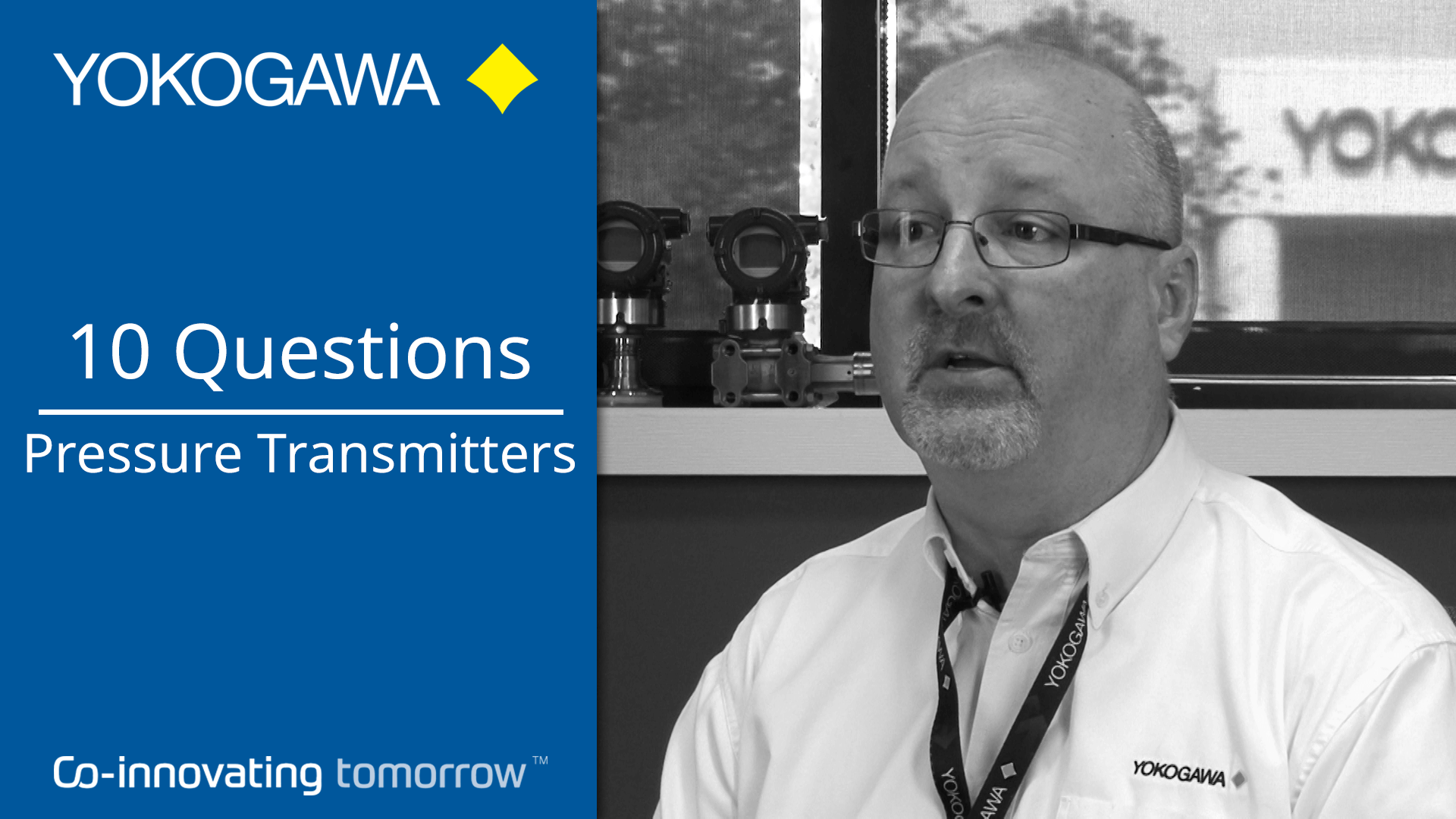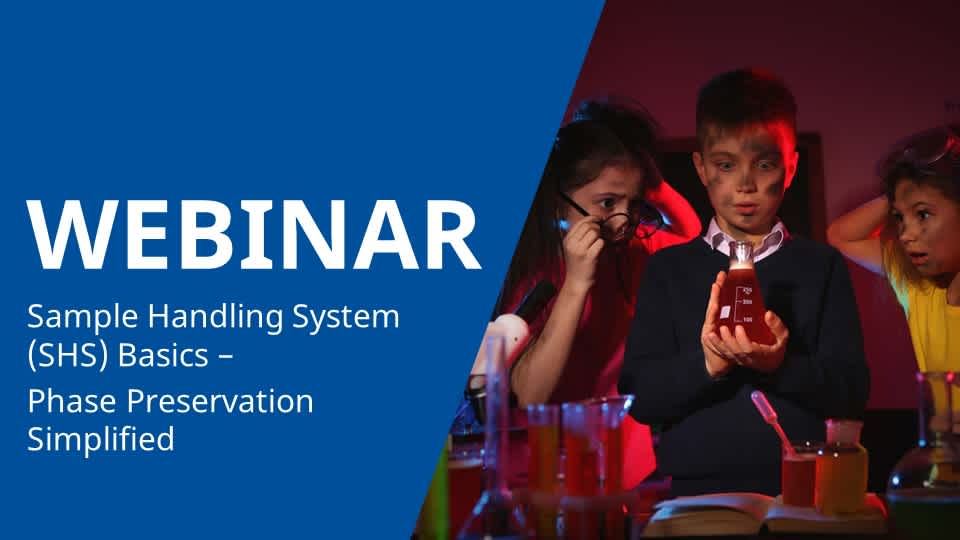The right pipeline control and instrumentation can make a huge difference in terms of performance and profitability. Yokogawa has dedicated technology that can optimize the performance of all elements of a pipeline solution, including compressors, pumps, valves, and intermediate storage and distribution facilities.
Challenges
Customer Challenge
- Need a single centralized control room to improve overall operation and management of the gas pipeline.
- Need the backup and main master stations in separate locations for a disaster preparedness measure.
- Collect manually the operation data for each of the regional pipelines.

Our Solutions
- For the central control room- provide the FAST/TOOLS package and a high availability computing solution that utilizes a history server, client server, and zonal server in a triple redundant configuration.
- For each regional gas management center - implement a FAST/TOOLS-based solution that relies on dual redundant front-end processor servers, for uninterrupted monitoring and control.
Customer Benefits
- With redundant configuration, the flow of operation and maintenance data from the field is ensured.
- Operators, production engineers, and analysts have the real time visual access 24/7 through the year to the data.
- System availability for the entire customer pipeline network has been increased to 99.5%.


Achievements
- Ensured steady gas supply across the nation
- Improved efficiency of operation and maintenance
- Minimized Total Cost of Ownership
Enabling Technology
FAST/TOOLS
- Originating as the Flexible Advanced System Techniques (FAST) project, FAST/TOOLS today is a comprehensive, fully-integrated SCADA application suite.
- Powerful and flexible, FAST/TOOLS serves installations ranging from 50-point unit processes to multimillion-point offshore production and pipeline systems that extends over thousands of miles.

Succes Story
GAIL - Yokogawa FAST/TOOLS SCADA System Centralizes Monitoring & Control of India's Gas Pipelines
Details
Overview

The Enterprise Pipeline Management Solution “EPMS” provides a collection of standard pipeline applications to facilitate the management and operations of gas/liquids pipeline systems. Applications can be seamlessly plugged into the FAST/TOOLS real-time system platform similar to SCADA monitoring and control environment. EPMS consist of two packages; Gas Enterprise Management Suite and Liquid Enterprise Management Suite.
Benefit
The EPMS package brings the following benefits based on 20 years of experience in engineering medium to large complex pipeline automations.

Pipeline Management System Implementation
- Better and faster implementation
- Knowledge centralization, retention and documentation
- Enhanced lifecycle management
- Reliable system using proved functions
- Dedicated consultant and product support
Cost of Integration
- Prevent application vendor and integration technology lock-in
- Establish a standards-based and IT/Security compliant application platform
Reduced Cost of Ownership
- Standard technology
- Scalable, flexible, reusable
- Lifecycle management
Industry Standards Support
- Implement best practices from pipeline industry standards
- Provide foundation for regulatory support and compliance
Future Proof
- IT architecture hedges against disruptive technologies and trends
- Increased process and data variety, volume, and velocity
Functional Specifications

EPMS delivers the following interrelated and integrated functions;
- Processing of meter inputs for accurate measurement and flow calculations
- Management of gas data with the device scheduler and EFM log up-loader
- Schedule and monitor gas nominations
- Monitor the line-pack along the pipelines and segments
- Maximum Allowable Operating Pressure, MAOP, monitoring
- Pipeline balance, storage and inventory calculations
- Schedule and track batches for efficient transportation of liquid products
- Monitor liquid pipelines for leaks, inventory and hydraulic profiling
- Drag reducing agent management and power management on compressors and pumps
- Controlling a manifold with the flow path manager
- Tracking and management of anomalies like pigs/scrapers, merge/hot spots and interfaces
System Architecture
EPMS plugs into the FAST/TOOLS platform and inherits the FAST/TOOLS advantages in one common environment;
- One system/user management and configuration environment
- Same layout of pipeline displays can be used for process displays
- Same user authorization can be used within the whole application
- Standard features like reporting, history and configuration are available in the same environment

Resources
- STARDOM and FAST/TOOLS integrated SCADA solution for Indian Oil Corporation's multiproduct oil pipeline.
- STARDOM facilitates the total visualization of data needed for safe and reliable pipeline operations.
India's flagship natural gas company GAIL Limited integrates all India's Gas Pipelines by a Yokogawa FAST/TOOLS SCADA system.
- FAST/TOOLS SCADA system centralized monitoring & control of India's gas pipelines.
- All operation data can be directly utilized for gas allocation and billing.
- Effeciently controls the inlet valve and blow-off valve when the compressor starts and stops.
- During steady operation, controls the inlet valve so that the amount of discharged compressed air becomes constant (flow control)
- Surging: Load decreases, the amount of discharge flow and pressure drop, and a limit is exceeded, possibly destroying the compressor.
Recently, several ARC Advisory Group analysts and management team members had a chance to sit down with the new Yokogawa President and COO, Mr. Takashi Nishijima, and several other top Yokogawa executives to discuss the company's burgeoning presence in the worldwide upstream and midstream oil & gas industry.
Alarm management is not just a project that has a start and end date; it's a continuous cycle. Once the alarm system has been reviewed and improvements have been identified, we must check that controls are in place to ensure the alarm system remains functional. The key is to ensure that the system is continuously monitored and any changes are fully documented. There are seven key steps for alarm management. Rationalization is one of those critical steps.
Tuning PID controllers can seem a mystery. Parameters that provide effective control over a process one day fail to do so the next. The stability and responsiveness of a process seem to be at complete odds with each other. And controller equations include subtle differences that can baffle even the most experienced practitioners.
The worlds of process automation and production management have been converging for some time. What once used to be islands of automation and production management functionality connected through highly proprietary integration schemes that were costly to maintain have developed into integrated platforms that provide seamless data exchange between the world of automation and the plant floor, the functions of production and operations management, and integration with business level systems.
The automation suppliers that will be successful in the long term will be those that effectively address application or industry specific problems for end users with a value proposition that cannot be ignored. These problems exist throughout the process industries today, and they won't be solved by simply offering a product, but through a combination of hardware, software, services, application expertise, and knowledge.
In ARC's view, customers need a compelling business value proposition to justify investment in any kind of automation. Vigilance and VigilantPlant were created with this in mind. Yokogawa's vision with VigilantPlant is to create an environment where plant personnel and operators are well informed, alert, and ready to take action.
Only 5% of data is transferred into meaningful information so, asks Frank Horden, Business Development Manager, Yokogawa Global SCADA Center, USA, how to ensure pipeline management data is translated into valuable knowledge?
Pipeline & Gas Journal, February 2014
The line of functionality between supervisory control and data acquisition and distributed control system is blurring. These two traditionally disparate technologies are now seen as competitors in similar application environments.
Supervisory control and data acquisition (SCADA) systems have been part of the process industries for many decades and cyber security measures need to grow as technology advances. SCADA systems are used in oil and gas pipeline and other remote control and monitoring applications, such as electrical transmission and distribution, and water/wastewater.
Downloads
Brochures
Videos
How much do you know about pressure transmitters? Are you accurately, quickly and reliably measuring pressure? Ultimately, the drive of any good pressure transmitter is to get an accurate, reliable pressure measurement to the data user quickly. This video gives you the answers to your basic questions about pressure and pressure transmitters.
Sample systems are a crucial component of and have a significant impact on the performance of a process gas chromatograph analyzer. When working on sample systems, you must have a constant awareness of time delays. This fundamentals webinar will take the mystery out of lag times.
News
-
Press Release | Projects Jan 28, 2018 Yokogawa Receives EPMS and SCADA Order for Egypt's National Gas Grid
- Expanding our control business in the midstream oil and gas market-
-
Press Release | Solutions & Products Jan 25, 2018 Yokogawa Releases Enterprise Pipeline Management Solution R1.03
-
Press Release | Projects Jun 15, 2016 Yokogawa Receives SCADA System Order for Gas Distribution Pipeline Project in Bangladesh
Looking for more information on our people, technology and solutions?
Contact Us


